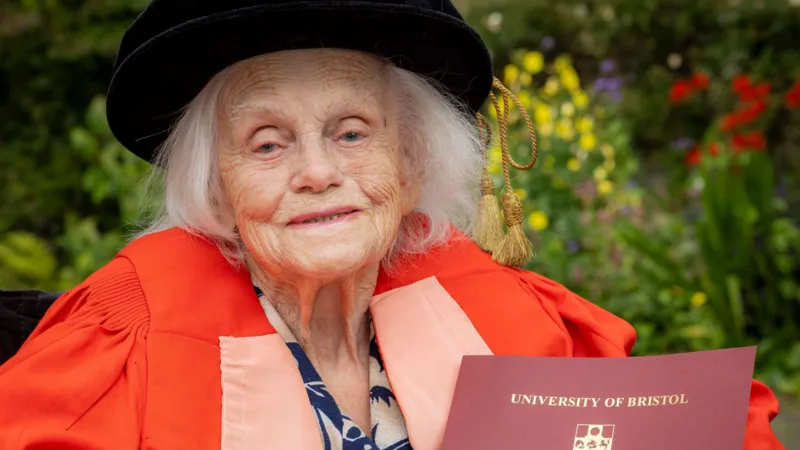A 98-year-old trailblazing physicist who relinquished her PhD 75 years ago to focus on family has been awarded an honorary doctorate by her former university.
In 1948, Rosemary Fowler’s research at the University of Bristol laid the groundwork for groundbreaking advancements that transformed the field of physics.
Her identification of the Kaon particle was pivotal in sparking a revolution in particle physics theory. However, in post-war Britain, she chose to leave academia upon marrying fellow physicist Peter Fowler in 1949, subsequently raising three children.
Dr Fowler said she felt “very honoured”, but added: “I haven’t done anything since to deserve special respect.”
Dr. Fowler was awarded her doctorate during a private ceremony near her Cambridge home, with Nobel laureate Sir Paul Nurse, Chancellor of the University of Bristol, presenting her with an honorary Doctor of Science degree.
Dr. Fowler’s discovery of the Kaon particle was instrumental in predicting the existence of particles like the Higgs boson, which was later confirmed at CERN in Geneva, Switzerland.
Sir Paul commended Dr. Fowler for her “intellectual rigor and curiosity,” noting that her pioneering work “paved the way for crucial discoveries that still influence contemporary physicists and our understanding of the universe.”
Born in Suffolk in 1926, Dr. Fowler spent her childhood in Malta, Portsmouth, and Bath due to her father’s career as a Royal Navy engineer.
In 1948, while working with Bristol’s cosmic ray physics team under Professor Cecil Powell, Dr. Fowler, then just 22, identified a new particle from unusual particle tracks.
This particle decayed into three pions, leading her to recognize its significant potential.
“We were seeing things that hadn’t been seen before – that’s what research in particle physics was. It was very exciting.”
The track she observed, later designated as k, indicated the presence of an unknown particle now recognized as the kaon or K meson.
The k track was the mirror image of a particle previously observed by colleagues in Manchester, but while the Manchester team’s particle decayed into two pions, Dr. Fowler’s particle decayed into three.
Exploring why these mirror images were similar yet exhibited different behaviors contributed to a groundbreaking shift in particle physics theory.
The year following her discovery, Dr. Fowler left academia after publishing her findings in three scholarly papers.



